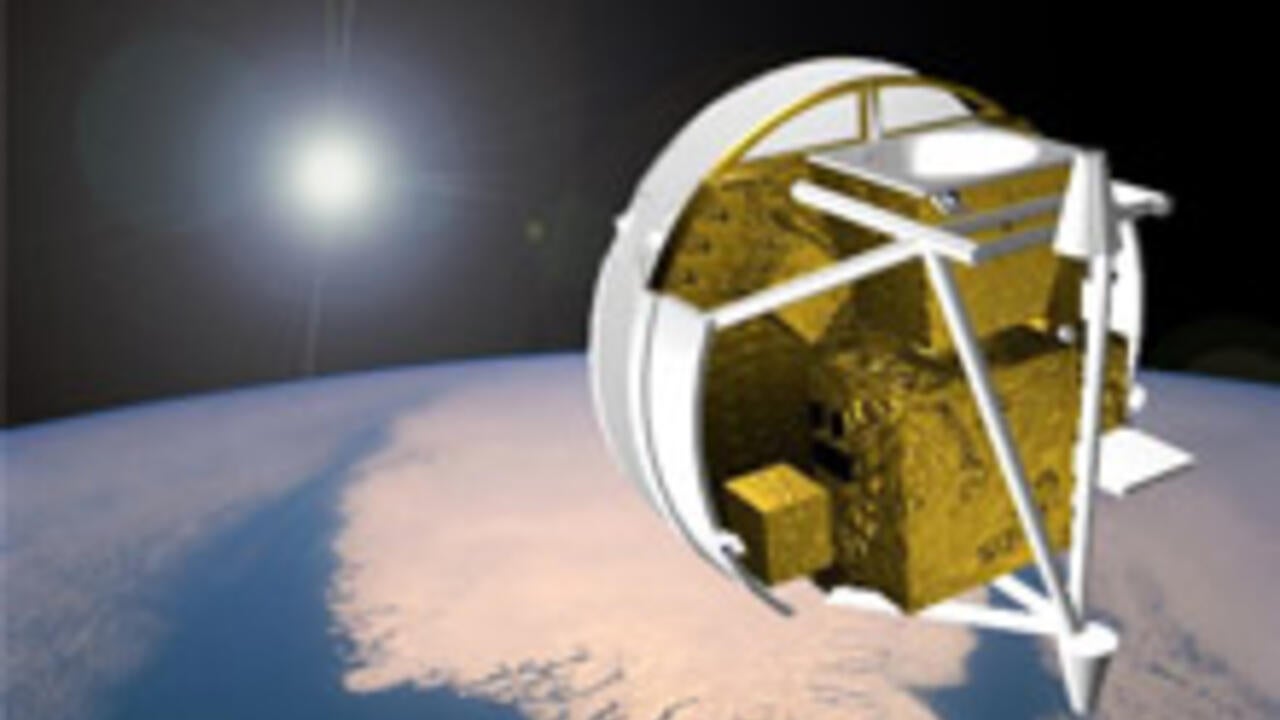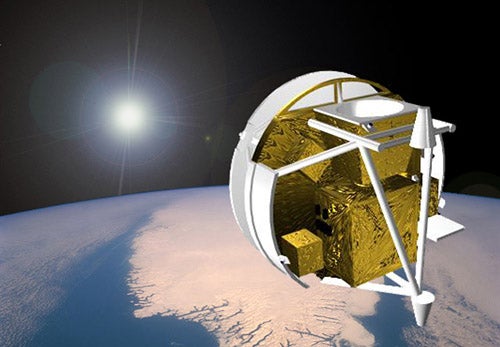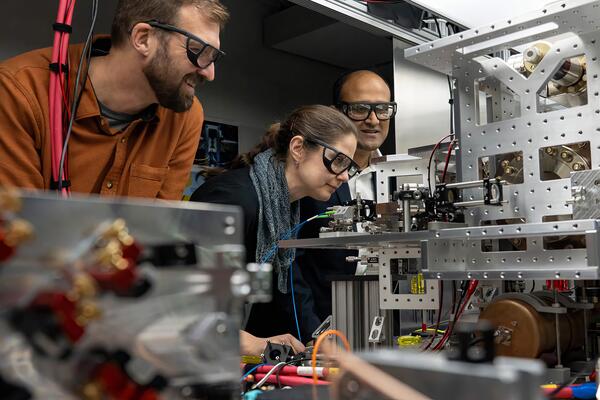
Waterloo’s satellite data key to tracking ozone recovery
The Atmospheric Chemistry Experiment (ACE) onboard a Canadian satellite is providing important data to an international team of scientists

The Atmospheric Chemistry Experiment (ACE) onboard a Canadian satellite is providing important data to an international team of scientists
By Victoria Van Cappellen Faculty of ScienceAn atmospheric research project based at the University of Waterloo is helping a global team of researchers uncover the mysteries of the Earth’s ozone layer.
Satellite data gathered, in part, by Waterloo’s Atmospheric Chemistry Experiment (ACE) are helping scientists understand why an ozone-depleting gas in our upper atmosphere increased recently after many years of falling concentrations.
This increase in the concentration of hydrogen chloride (HCI), the main ozone-depleting molecule in the upper atmosphere, happened despite the 1987 ban on the use of chlorofluorocarbons (CFCs) under the Montreal Protocol. These chemicals are transported to the stratosphere where they release chlorine atoms, which react with ozone, thereby depleting the ozone layer. Without the ozone layer, most life on Earth would die from harmful UV radiation.

Data from the ACE project, led by adjunct chemistry professors Peter Bernath and Kaley Walker, helped scientists determine that hydrogen chloride increased due to a temporary slowdown in atmospheric circulation over the Northern Hemisphere. The change in atmospheric circulation has resulted in more aged air being transported to the lower stratosphere, causing a greater than normal conversion of CFCs into HCl.
In contrast, over the Southern Hemisphere, where atmospheric circulation has not changed, HCl concentrations are decreasing in line with the Montreal Protocol reductions.
The international team of atmospheric scientists from institutions in Belgium, Great Britain, Germany, the US, Japan, New Zealand and Canada recently presented their results in the scientific journal Nature.
Launched by NASA on board the Canadian satellite SCISAT in 2003, ACE was originally intended for a two-year mission. But eleven years later it still provides vital chemical and physical data about our atmosphere, particularly the ozone layer.
“The mission has been a great success,” said Bernath, lead scientist for the ACE mission. “The enormous amount of high-quality data has been critical in helping us understand long-term trends in our atmosphere’s composition.”
The research team that published their findings in Nature concludes that atmospheric variability needs to be accounted for in future studies involving other stratospheric tracers. They also speculate climate change may become a factor in how quickly the ozone layer recovers.
“Our observations do not challenge the general view that the Montreal Protocol is working. They rather show that atmospheric variability and perhaps climate change can significantly modify the path towards full recovery,” said Prof. Emmanuel Mahieu, lead author of the study. “It will be a bumpy ride rather than a smooth evolution.”
Bernath is professor of chemistry and biochemistry at Old Dominion University and Walker is professor of physics at the University of Toronto. The ACE project is headquartered in Waterloo’s Faculty of Science.

Read more
And a new model for how quantum research is shared — opening doors for the next generation of scientists and entrepreneurs

Read more
Here are the people and events behind some of this year’s most compelling Waterloo stories

Read more
Meet five exceptional Waterloo graduate students crossing the convocation stage as Class of 2025 valedictorians
The University of Waterloo acknowledges that much of our work takes place on the traditional territory of the Neutral, Anishinaabeg, and Haudenosaunee peoples. Our main campus is situated on the Haldimand Tract, the land granted to the Six Nations that includes six miles on each side of the Grand River. Our active work toward reconciliation takes place across our campuses through research, learning, teaching, and community building, and is co-ordinated within the Office of Indigenous Relations.